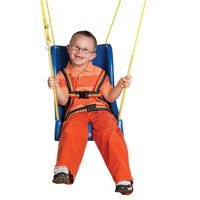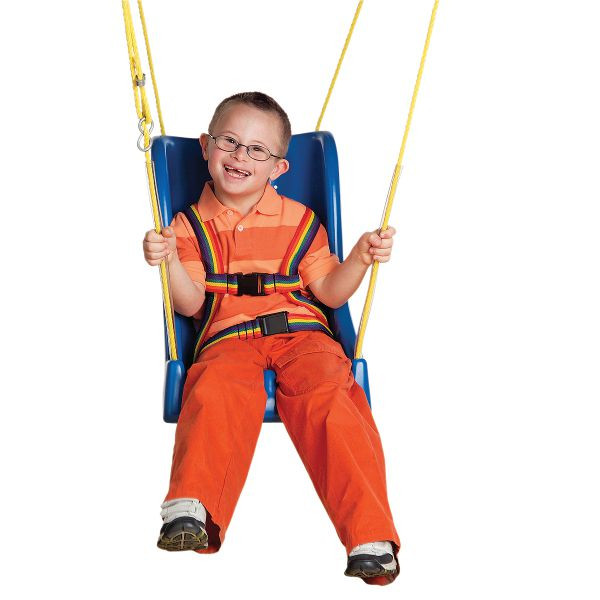 21st Jul 2015
21st Jul 2015
Therapy Swings for Autism Spectrum Disorder
I remember the first time I took my niece to the park. My sister and I put her in a swing and gently started pushing. My niece immediately got agitated and wanted out. Fast forward a few years when she was diagnosed with Autism and suddenly, that experience made more sense. For most people, combining their sensory experience isn’t a problem. But for someone with autism, processing the stimuli of sight, smell, sound, touch, taste and balance is overwhelming. My sister worried that her daughter wouldn’t be able to experience typical children’s childhood things like swinging and enjoy them. That worry was abated however when my niece’s occupational therapist began using a therapy swing.
Therapy Swings for Special Needs
A significant amount of occupational therapy for autism focuses on sensory integration through specially designed programs and tools. Some of the greatest tools for sensory integration therapy for autism type disorders are adaptive swings. Additionally, children and adults with Sensory Processing Disorders, especially those with proprioceptive or vestibular dysfunction, should definitely have swings or therapy hammocks as a crucial element of their treatment. The swing can help children who find the smooth, swaying motion soothing, relax and unwind while using it. However, children who have a vestibular dysfunction may feel uneasy while in the swing/hammock and might initially protest its use. For them, swing/hammock therapy is more about regaining equilibrium and learning to tolerate vestibular stimuli. The motion of swinging restores balance to the vestibular system, provides proprioceptive input (deep pressure) and generally helps autistic-spectrum children feel more "in balance". The soothing motion of swinging soothes, relaxes and increases concentration. Additionally, children who have trouble focusing on tasks such as reading or math, might find it easier to concentrate sitting in a hammock chair, their bodies engaged in a soothing motion.
How Therapy Swings Work
As I said above sensory integration is difficult for many autistic children. Swings offer help with sensory integration. Autistic children crave deep pressure activities and yet they demonstrate tactile defensiveness. In the area of movement, the vestibular movement of swinging assists children in being able to process sensory input. Swinging for a child who is autistic is more than just play, it helps process stimuli.
How a Therapy Swing is Different
What kind of swing is used in occupational and physical therapy? When most people think swing, they remember the classic swing similar to one hanging from a tree limb in a backyard when they were kids. Although this type of swing would be beneficial in the sensory integration process, the swing used in schools and therapy programs are different and therefore even more beneficial. Therapy swings may offer platform-type seating with 360 degree range of motion. Others offer a sling or hammock that provides snug pressure as the child moves.
What I love most about swing therapy is that it’s available for office and home use. My niece loved the swing so much my sister bought a therapy swing upon recommendation of her occupational therapist. The benefits of swing therapy are enormous. Children on the Autism spectrum can have fun, be soothed and receive therapeutic sensory integration instruction all at the same time. These benefits are life-changing. For example, when my niece was young, she would cry for hours at a time, but after working with an occupational therapist for sensory integration, those crying episodes decreased significantly and more time was spent just being a kid.
This type of benefit can make all the difference in the quality of life of not only patients with Autism Spectrum Disorder, but for those who care for and about them. For those with Autism Spectrum Disorder, the stimuli found in the world is overwhelming, but with tools like swing therapy, they’re able to process that stimuli and actually enjoy them.
For more adaptive therapy equipment and information about products for everyday living go to ProHealthcareProducts.com






